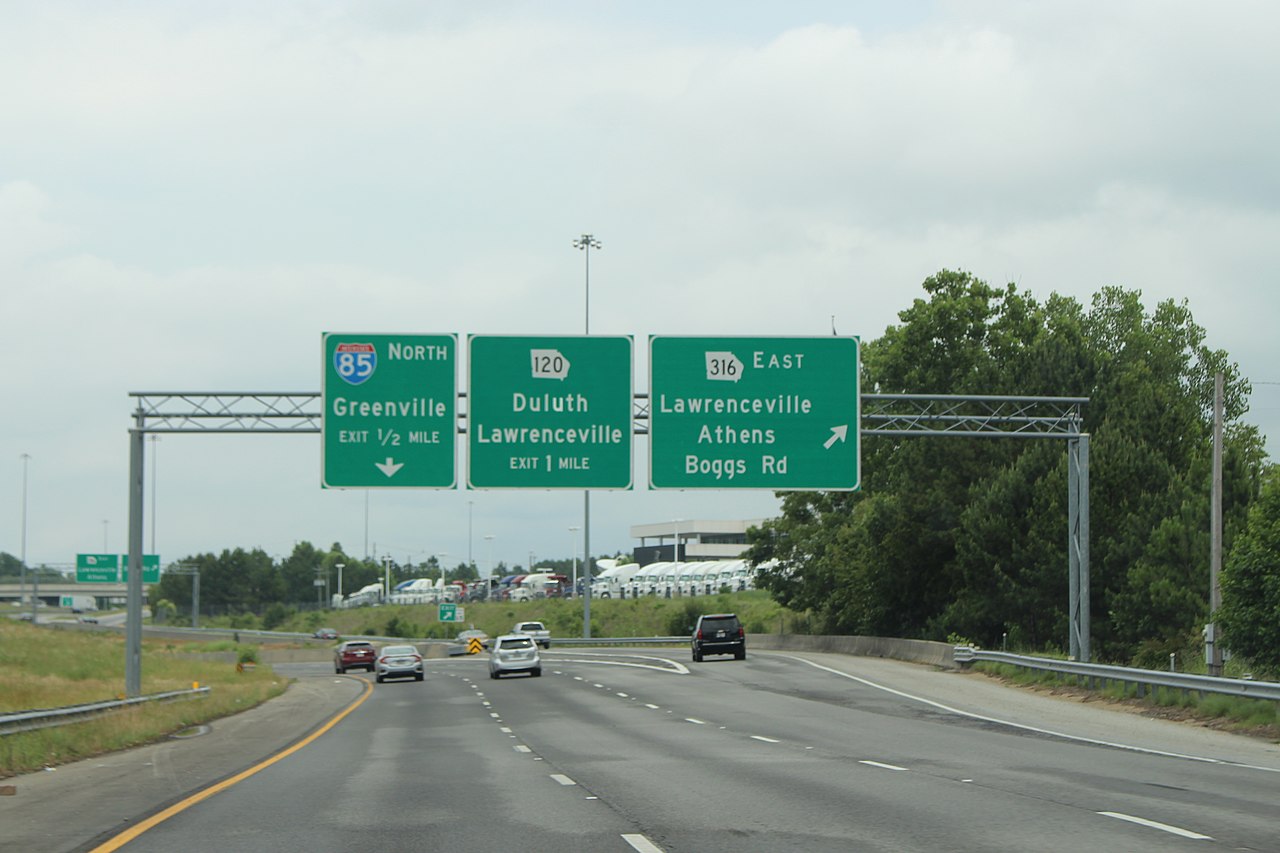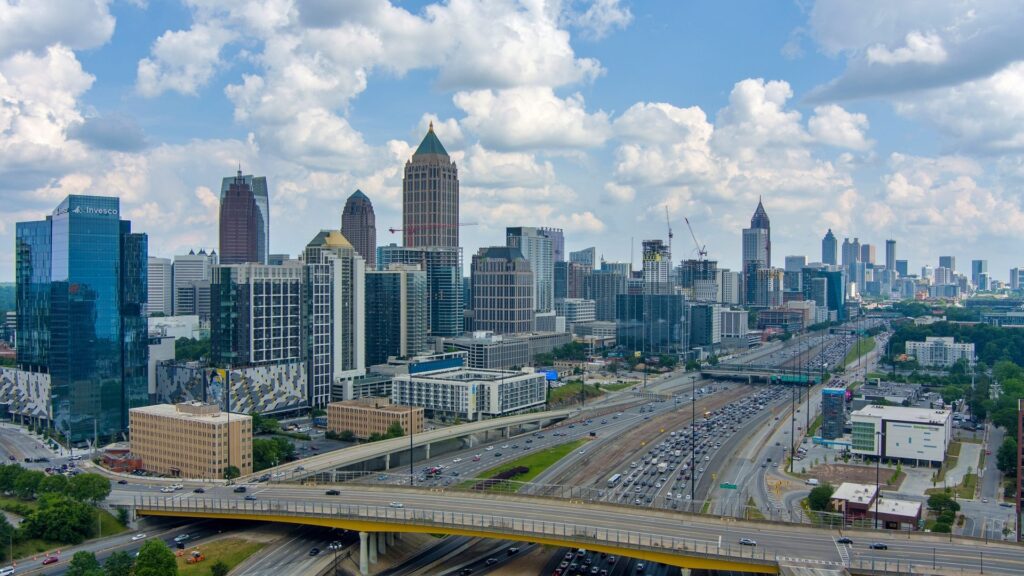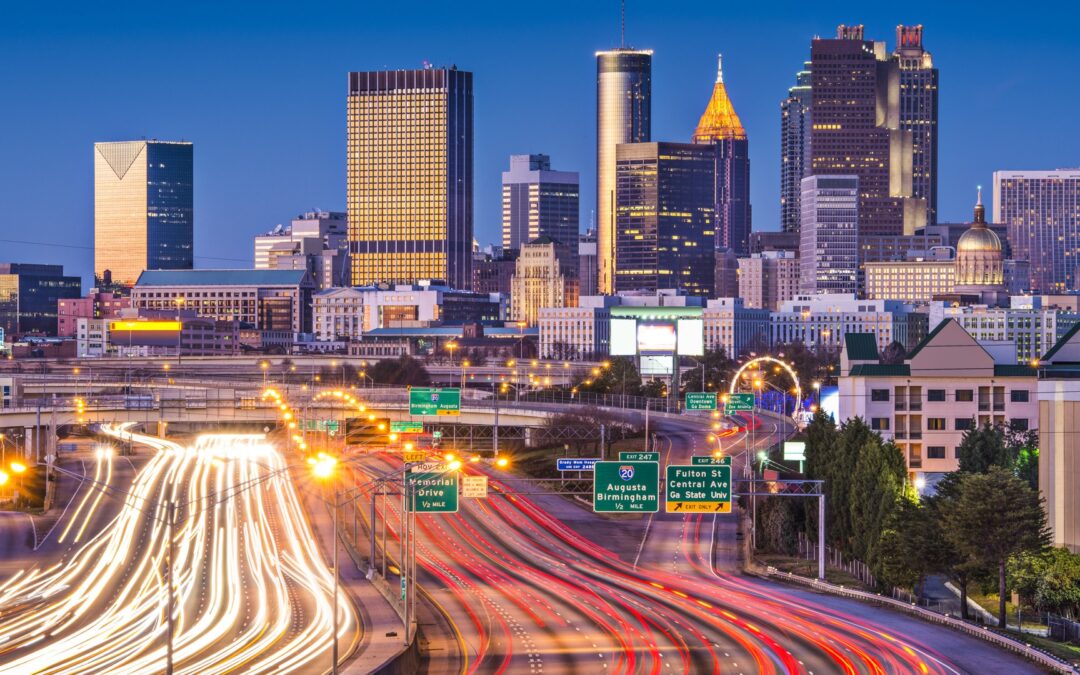Georgia’s highways and intersections, especially in places like Metro Atlanta, Savannah, and Macon, are known for their accident-prone spots. Heavy traffic, complex intersections, and high-speed merging create challenging conditions for drivers. Understanding where these dangerous spots are and why they pose risks can help drivers stay vigilant, make safer decisions, and reduce the likelihood of accidents. Here, we’ll explore some of Georgia’s top car accident hotspots, complete with tips to navigate these areas safely.
Why Are Certain Areas More Accident-Prone?
Several factors contribute to accident hotspots, such as traffic volume, complex road designs, limited visibility, high pedestrian activity, and distracted driving. In urban areas, congested streets, frequent stops, and heavy pedestrian traffic can increase risks. Meanwhile, on highways, high speeds, frequent lane changes, and merging traffic create an environment ripe for collisions. Recognizing these hotspots can be a powerful tool in practicing safer driving.
Metro Atlanta’s Most Dangerous Intersections
1. Interstate 285 and Interstate 85 Interchange (Spaghetti Junction)
The infamous “Spaghetti Junction,” where I-285 meets I-85 in DeKalb County, is one of Georgia’s most complicated and hazardous interchanges. With overpasses, underpasses, and intricate on-and-off ramps, this area is particularly dangerous due to:
- Complex roadways requiring precise merging and lane changes.
- High-speed traffic and congestion during peak hours.
- Heavy truck presence as it serves as a critical route for commercial vehicles.
Accident Data: According to recent reports, Spaghetti Junction consistently ranks among the top locations for accidents in Georgia. The intersection’s design complexity means drivers must navigate rapidly shifting lanes, which heightens the risk of collisions.
Safety Tips:
- Stay in your lane until you’re sure of the exit or lane change.
- Avoid peak travel times (early morning and late afternoon) if possible.
- Maintain a safe following distance, especially around large trucks.
2. I-285 at GA 400 (Northside Drive)
This junction is one of the busiest in Metro Atlanta. Frequent lane changes, tight merges, and high-speed traffic make it a prime location for accidents. Georgia 400’s heavy commuter traffic only adds to the congestion and risk factors.
Safety Tips:
- Plan your route in advance to reduce last-minute lane changes.
- Use your GPS for live traffic updates to adjust your route if necessary.
- Watch for aggressive drivers who may attempt unsafe merges or speeding.
3. Peachtree Road at Piedmont Road (Buckhead)
Located in a busy commercial area of Buckhead, the intersection of Peachtree and Piedmont is notorious for congestion, high pedestrian activity, and frequent rear-end collisions. The area’s heavy mix of retail, restaurants, and pedestrian traffic increases the chance of distracted driving accidents.
Safety Tips:
- Reduce speed as you approach the intersection, especially during busy hours.
- Be mindful of pedestrians who may cross unexpectedly.
- Stay alert for sudden stops due to the stop-and-go traffic typical in this area.
4. Moreland Avenue at I-20 (East Atlanta)
Moreland Avenue intersects with I-20 in East Atlanta, creating a challenging area for drivers due to its busy mix of local traffic, highway access, and nearby commercial zones. With frequent merging and sudden stops as drivers enter and exit the highway, this intersection experiences a high rate of rear-end and side-impact collisions. The area also sees heavy congestion during rush hours as commuters use Moreland Avenue to access downtown Atlanta.
- Accident Data: Reports indicate that this intersection consistently ranks high in accident frequency, especially during peak hours.
Safety Tips:
- Anticipate sudden stops as drivers merge onto or exit from I-20.
- Maintain a safe following distance, as heavy congestion can lead to frequent braking.
- Be cautious of merging vehicles as Moreland Avenue connects directly to I-20’s on- and off-ramps.
5. Ponce de Leon Avenue at Moreland Avenue (Little Five Points)
Located in the vibrant Little Five Points area, the intersection of Ponce de Leon Avenue and Moreland Avenue is notorious for accidents due to high traffic, frequent pedestrian crossings, and a complex layout of multiple lanes and turning options. This intersection is surrounded by shopping and dining establishments, which draw both local traffic and out-of-town visitors unfamiliar with the area.
- Accident Data: This intersection sees a high volume of minor accidents, especially rear-end collisions, as drivers navigate the busy retail environment and complex traffic signals.
Safety Tips:
- Stay alert for pedestrians crossing at unexpected points.
- Use caution with lane changes, as the area’s multiple lanes can be confusing.
- Reduce speed to allow for safer stops, especially when traffic becomes congested around retail and dining areas.

Top High-Accident Prone Highways in Georgia
1. Interstate 75 (I-75) Corridor
Stretching from the Tennessee border through Atlanta and Macon to the Florida line, I-75 is one of Georgia’s most heavily trafficked highways. With high-speed limits and heavy truck traffic, certain stretches of I-75 are accident hotspots, particularly where it intersects with I-285.
Key Danger Zones:
- Areas near interchanges, such as the one at I-285 and the approach into Atlanta.
- Downtown Macon, where traffic merges from multiple directions.
Safety Tips:
- Stay in your lane and avoid weaving in and out of traffic.
- Watch for trucks, which have larger blind spots and longer stopping distances.
- Plan for rest stops if you’re on a long drive; fatigue is a significant risk factor on lengthy trips.
2. Interstate 85 (I-85)
From the Alabama border through Atlanta to South Carolina, I-85 is another major corridor with heavy congestion, especially in and around Atlanta. Accidents are frequent near exits and at merging points where drivers often make last-minute decisions, leading to collisions.
Safety Tips:
- Use caution when merging onto I-85, especially during high-traffic hours.
- Signal your intentions early to help other drivers anticipate your moves.
- Stay alert for sudden lane shifts due to ongoing roadwork in some sections.
3. Georgia State Route 316 (SR 316)
Known as “Death Highway” by locals, SR 316 has a reputation for dangerous conditions, particularly in the section between Lawrenceville and Athens. Many parts of this highway lack a median barrier, increasing the risk of head-on collisions.
Safety Tips:
- Avoid distractions and keep your eyes on the road, especially on undivided stretches.
- Be cautious at intersections where other vehicles might enter without adequate yield.
- Drive defensively, particularly at night when visibility is lower.
4. Interstate 78 (Stone Mountain Freeway)
Running through Stone Mountain and connecting to I-285, I-78, also known as the Stone Mountain Freeway, is notorious for accidents due to high speeds, frequent merging, and heavy commuter traffic. This route is particularly dangerous during rush hour, with sudden stops and congestion causing frequent rear-end collisions.
- Key Danger Zones:
- Areas near the Stone Mountain Park entrance, where tourists may be unfamiliar with the road.
- Exits approaching I-285, where congestion and last-minute merges increase collision risks.
Safety Tips:
- Keep a safe following distance to allow ample time for sudden stops.
- Avoid frequent lane changes, especially during peak traffic hours.
- Stay alert for merging vehicles near park entrances and major interchanges.
5. Interstate 20 (I-20)
I-20 runs east to west, connecting Atlanta to Augusta and beyond. Known for frequent accidents, this highway often experiences high speeds, abrupt lane changes, and congestion around exits, particularly as it passes through the Atlanta metro area. The combination of high-speed limits and heavy traffic makes certain segments of I-20 particularly hazardous.
- Key Danger Zones:
- Sections between I-285 and downtown Atlanta, where traffic flow changes abruptly.
- Interchange with I-285 and the areas leading into downtown Augusta, which see heavy congestion and complex merging patterns.
Safety Tips:
- Be cautious in construction zones and keep a lookout for lane shifts and narrow lanes.
- Avoid distractions to stay alert for changing traffic speeds and unexpected merges.
- Reduce speed in congested areas, as sudden stops are common.
High-Collision Intersections in Other Georgia Cities
1. Savannah: Abercorn Street at Mall Boulevard
In Savannah, the intersection of Abercorn Street and Mall Boulevard is a common site for rear-end collisions, especially during holiday shopping seasons. The high volume of pedestrians and frequent stops contribute to the risk.
Safety Tips:
- Slow down in anticipation of frequent stops.
- Allow extra space for braking as traffic can stop suddenly.
- Watch for pedestrians crossing in multiple directions.
2. Macon: Riverside Drive at Pio Nono Avenue
This busy intersection in Macon sees frequent accidents due to its high volume of traffic and complex lane merges. It’s a challenging area where high speeds and unexpected lane shifts often result in collisions.
Safety Tips:
- Reduce speed as you approach this intersection.
- Be prepared to yield as vehicles may cut across lanes.
- Stay alert for sudden changes in traffic flow.
3. Augusta: Gordon Highway at Bobby Jones Expressway (I-520)
In Augusta, the intersection at Gordon Highway and Bobby Jones Expressway (I-520) sees a notable number of accidents due to its complex exit and merging patterns. This intersection is a vital link for traffic between Augusta and surrounding areas, making it one of the busiest and most accident-prone intersections in the city.
- Why It’s Risky: With multiple entry and exit points and heavy commuter traffic, this intersection requires quick decisions and precise lane changes, which can lead to accidents if drivers aren’t paying close attention.
Safety Tips:
- Plan Your Route in Advance: Knowing which exit or lane to take can prevent last-minute lane changes that lead to collisions.
- Keep a Safe Following Distance: This area’s high-speed limits and frequent exits mean you may need to stop quickly, so maintain a safe distance from the car in front of you.
- Stay Calm in Congestion: Traffic here can be dense, especially during rush hour, so keep a steady speed and avoid aggressive maneuvers.
4. Athens: Epps Bridge Parkway at Atlanta Highway
The intersection of Epps Bridge Parkway and Atlanta Highway in Athens is one of the city’s most complex and congested areas, surrounded by shopping centers and busy retail outlets. The high volume of traffic and constant inflow of vehicles from multiple directions contribute to frequent rear-end and side-swipe accidents.
- Why It’s Risky: Heavy retail traffic combined with turning lanes, signal lights, and multi-directional traffic flow make this intersection difficult to navigate, especially during peak shopping times.

Tips for Avoiding Accidents at High-Risk Locations
1. Practice Defensive Driving
Defensive driving means anticipating other drivers’ actions and staying cautious. This can be crucial in high-risk areas where sudden stops, lane changes, and merges are common.
2. Watch Your Speed
Speeding is a significant factor in accidents. Slow down in high-risk zones, and adhere to posted speed limits, especially when road conditions are challenging.
3. Use GPS with Live Traffic Updates
Modern GPS systems like Waze or Google Maps can provide real-time updates on traffic conditions and offer alternate routes to avoid congested or accident-prone areas.
4. Avoid Peak Times When Possible
Congestion is usually at its worst during morning and evening rush hours. If you have flexibility, try to avoid traveling through known accident hotspots during these times.
5. Minimize Distractions
Distracted driving is one of the leading causes of accidents. Avoid using your phone, eating, or adjusting controls when approaching high-risk intersections and highways.
Conclusion: Navigating Georgia’s Dangerous Roads
Georgia’s top accident hotspots present unique challenges to drivers. Understanding where these high-risk areas are—and why they’re so prone to accidents—can help you make safer decisions. Whether it’s a complicated interchange in Metro Atlanta or a busy intersection in Macon, staying alert, practicing defensive driving, and planning your route can significantly reduce your risk. Remember, even a small adjustment in your driving habits can make a substantial difference. Safe driving in these areas is not only crucial for your well-being but also for the safety of everyone on the road.
For those involved in an accident, understanding the risks and causes at these hotspots may be essential in establishing liability and pursuing compensation. If you’ve been in an accident, consulting a car accident attorney can provide the guidance and representation you need to ensure your rights are protected.

